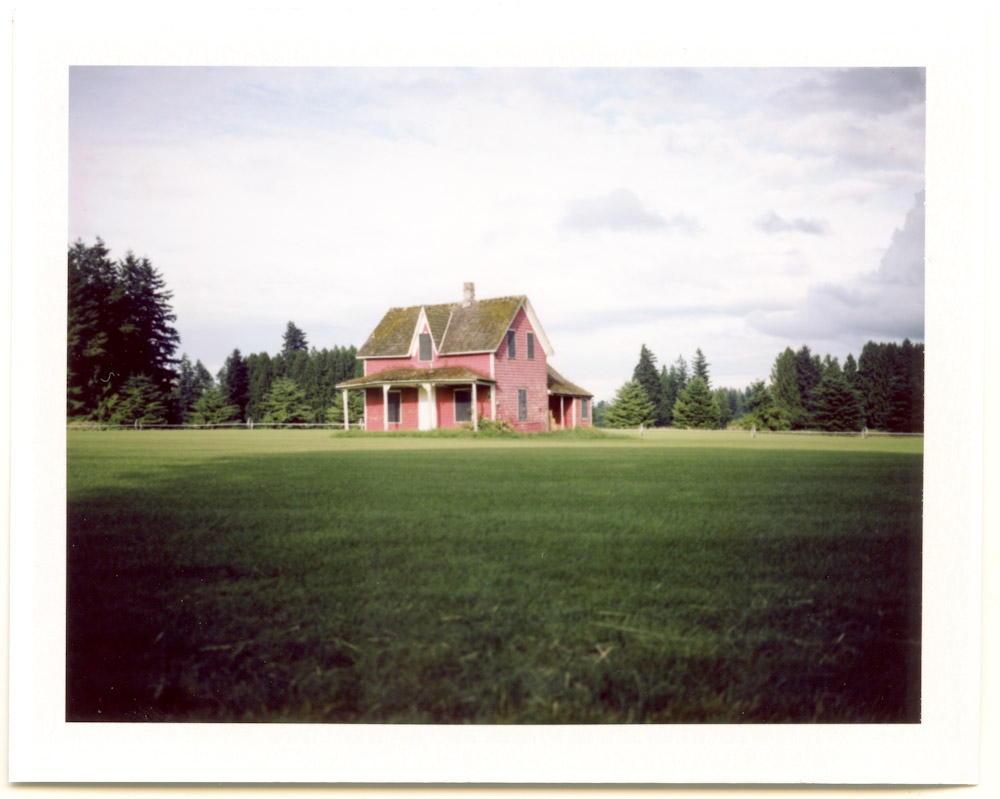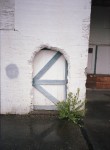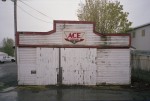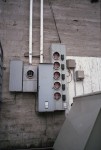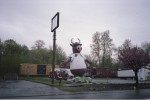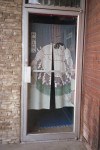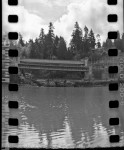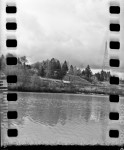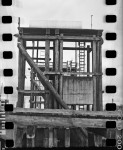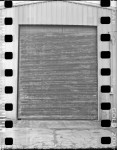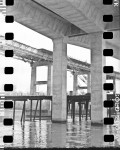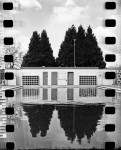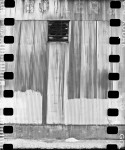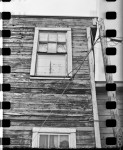Aug
17
2013

If it’s that 1980’s vibe your after this camera will match your feathered hair nicely just don’t get it caught between the sides of your water-bed. The Ricoh 35 EFS is very simple to operate. All exposure is automatic, the flash is turned on by you and you focus be selecting a little icon on the lens barrel. I mean how well do you want the camera focused on that mix tape in your hand anyway. So yes it’s built to look like a rangefinder of the 1970’s but it’s all plastic like the 80’s and is on the large side just like your shoulder pads. The lens is a 40mm f2.8 with 3 groups and 4 elements. Seriously though this is like totally the camera I would take in a Delorean at 88 miles an hour.
6 comments | tags: film, Photography, Ricoh | posted in Cameras, Photography
Aug
15
2013
A small fun colourful camera that shoots 16×9 pictures and verges on being miniature. That pretty much sums it up in one sentence.
The next sentence of course should be it uses APS film which hasn’t been produced for several years.
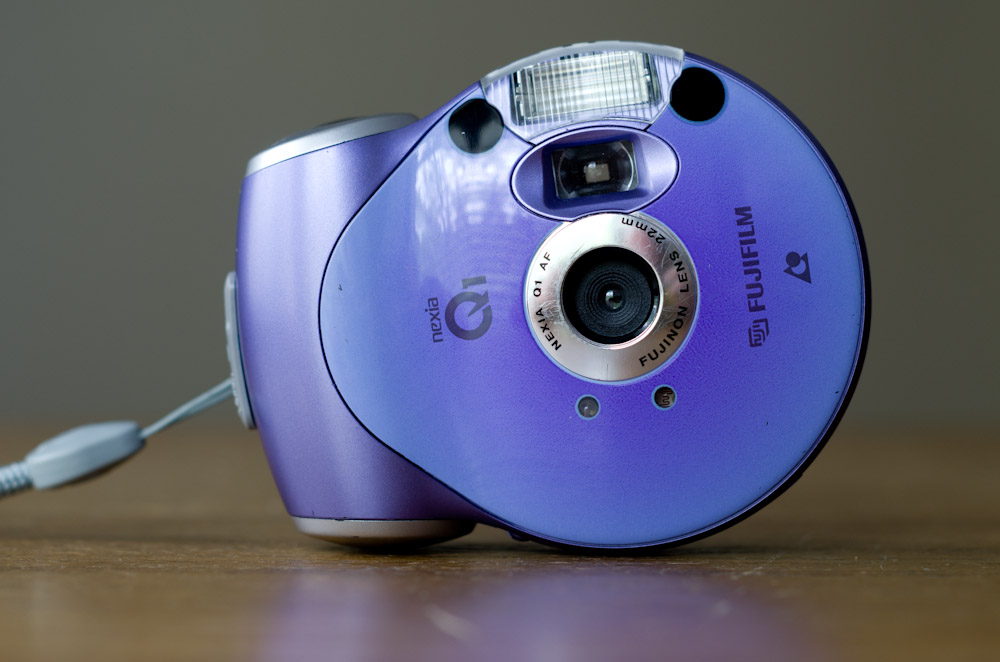
More about this camera Fuji Nexia Q1
2 comments | tags: APS, film, Fuji | posted in Cameras, Photography
Aug
12
2013
The oops comes from the fact that I tried the Pentax DFA100 macro WR lens with the Pentax Super Program, these pictures are not from that lens. 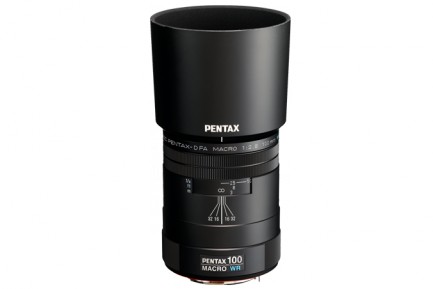
The smc PENTAX D FA 100mm F2.8 WR Macro doesn’t have an aperture ring but relies on the camera body to adjust the aperture. That is not a problem when using it with a DSLR or even a more modern film camera. The Super Program though is not one of these it indicates a particular aperture in the viewfinder but that doesn’t correspond with the lens setting. This fact makes this type of lens/camera combination incompatible. The images I took are terribly due to underexposure, it seems that the lens was completely stopped down as far as possible f32. It does work very well with my Pentax PZ1p though.
2 comments | tags: film, lens, Pentax | posted in Cameras, Photography, Uncategorized
Aug
5
2013

The Yashica T3 is one of those cameras that you tend to keep coming back to using because of the lens. I haven’t been able to definitely pinpoint what sets the look of the images from this camera apart but I know I like the results. It’s not always easy to convey that through small web images and these look a little soft as I post them but the originals are not.
no comments | tags: camera, film, Photography, Yashica | posted in Cameras, Photography
Aug
3
2013



I absolutely love the industrial design of this camera, all the little touches that add up to a suburb whole. The knurled knobs and engraved script say this is a precision analog device. It has a faster than average f2.0 Xenon lens that like the rest of the camera is made in Germany. Away from the center it gives distinctive out of focus highlights that are shaped more like a football than a circle.

Unfortunately the viewfinder is small and the rangefinder patch is dim making composing and focusing less than ideal. In some cases it was easier to set the focus via the distance scale on the front of the lens rather than by using the rangefinder. The result was quite a few missed focus shots, but as is my usual refrain you get images with a certain look from it.
no comments | posted in Cameras, Photography
Jul
27
2013

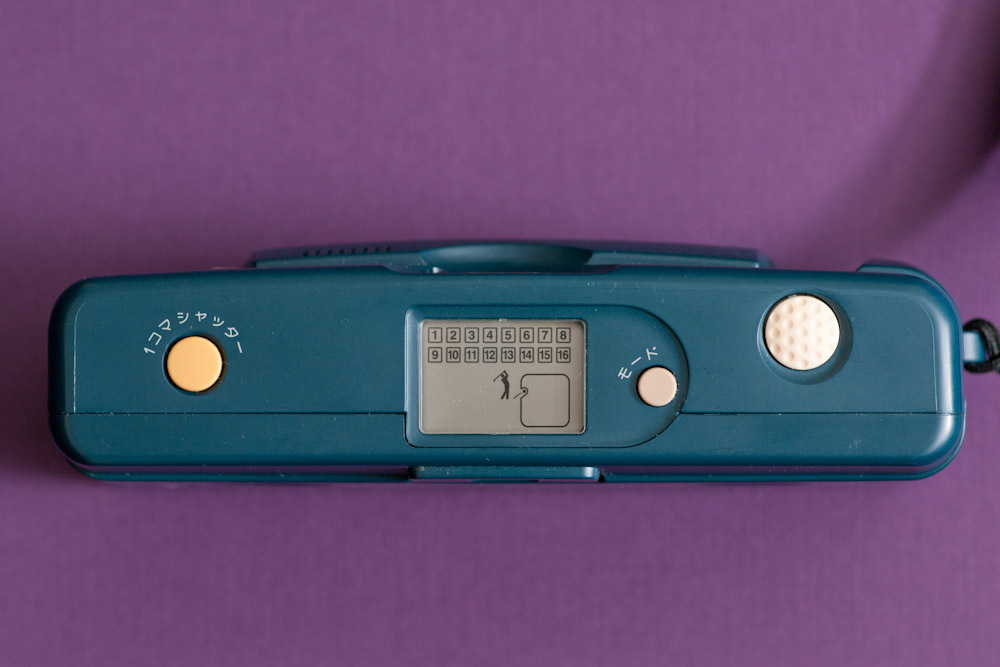
I’m often looking to expand my photography beyond the bounds of a single image either through multiple exposures or image pairs. Now I’ve found another tool the Fuji Rensha Cardia with its sixteen individual lenses. If the dimpled shutter release button isn’t enough to indicate that it was originally intended to record your golf swing then the icon of the guy swinging a golf club should probably drain the putt. The lenses can be released at two rapid speeds in one sequence or one at a time with the second button on the left. The sixteen little sub frames are recorded across two standard 35mm frames. Therefore the first frame contains the image from 1 to 4 on the top and 9 to 12 on the bottom.
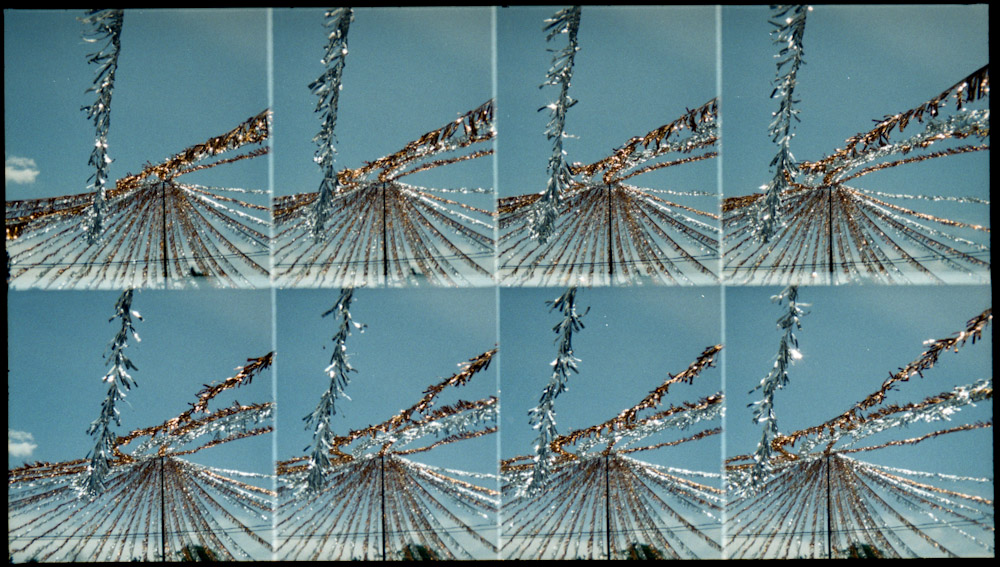
I created animations from the individual images like from the image above
And experimented with the individual shutter release in images like the one bellow. There are many more things that can be done within the 16 frames
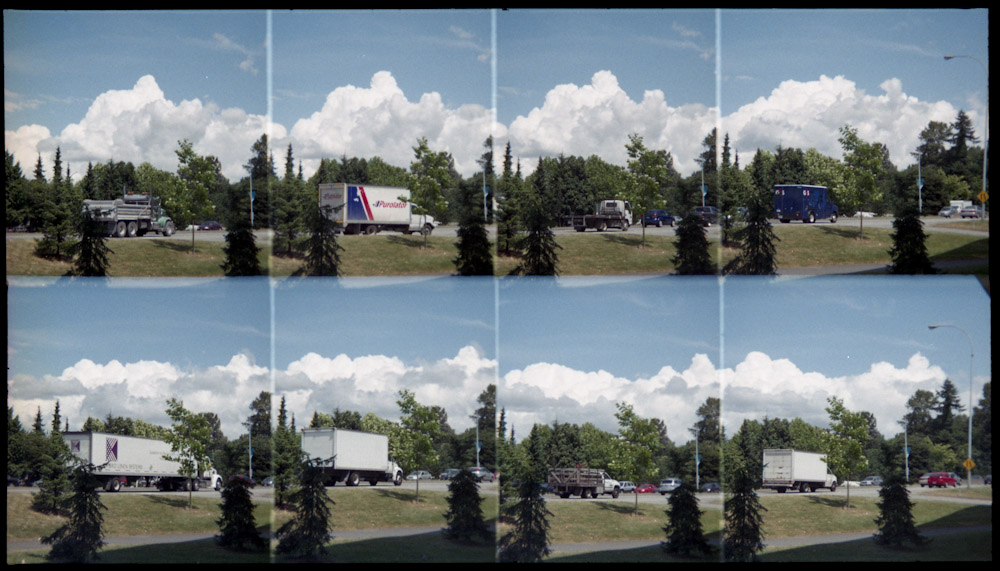
Yes you could shoot individual pictures with some form of digital camera or phone and then stitch them together but this is at least sixteen times more fun than doing that.
I put together a few animations that can be seen on Youtube
5 comments | tags: camera, film, Fuji | posted in Cameras, Photography, Processing
Jul
16
2013

My initial try with this camera was marred by the horrible out of date Polaroid brand film I used with it. If it hadn’t otherwise been such a good performing camera I would have just left it at that but it seemed to deserve another roll.
And how do I feel now? Well it’s a good camera with great ergonomics as I outlined in my first post Ricoh RZ3000 , but as for results it doesn’t produce anything that necessarily stands out. I could go back to bad film, that stands out but otherwise it doesn’t really give me a look that says this is why I still shoot film.
When I choose to use film one of the reasons is the overall experience of the camera, such as using a Twin Lens or a rangefinder but with the RZ3000 it’s almost too much like just using a digital camera. So as good as it is it will go back into a small box with similar cameras until I forget what I just wrote and take it out again.
2 comments | tags: camera, film, Photography, Ricoh | posted in Cameras, Photography
Jul
13
2013

Kodak gold, old Kodak Gold, old Expired Kodak Gold is the most frustrating film to scan while showing the sprockets. It not only wants to coil into a tight little roll it wants to curl into a ball from the sides. Arrrrggg (That is the sound Of frustration) The curling was so bad that I couldn’t even scan it as colour because of all the shifts from the orange C41 mask, or hold it flat. That is why despite the film being labeled Gold-200 it’s converted to Black and White.

Switching to the Yashica 44’s ground glass from an SLR viewfinder or an LCD screen takes some adjustment as everything is mirrored. So to move an object on the glass to the left the camera needs to be turned to the right. I tend to tilt the horizon for some reason so the red lines are very helpful. Another added aid is the small magnifier (not shown here) that can be popped out to check focus on the glass. Modifying this camera (Yashica 44 35mm conversion) is a great way of making it usable again despite the fact that it is a film orphan. I will never use Kodak Gold in it again though.
no comments | tags: camera, film, Photography | posted in Cameras, Photography, Processing
Jul
7
2013

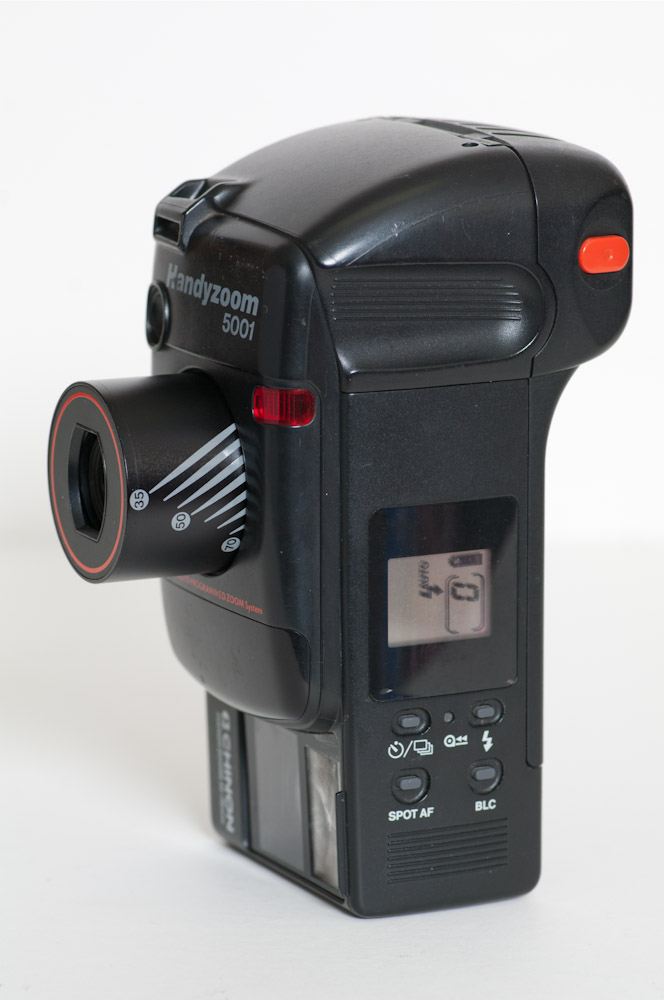
Ever since I acquired a Pentax K-01 I have been looking to prove that its design isn’t as bad as it has been made out to be. I now have physical evidence that it is not the worst camera design in history ( I myself never thought that ). May I present to you the Chinon Handyzoom 5001. If you are a mason or a fan of masonry you will feel right at home with its brick like shape.
As its name suggest its handy to zoom, wait no that’s not right it’s unhandy to zoom even two handy, but that would be a lot harder to advertise. I wonder if the designers thought okay we have designed the worlds first ‘Auto Programmed Zoom Composing system ‘ so let’s hide the zoom buttons. Let me clarify, the camera has two on positions, with one mode the camera automatically zooms to help frame for portraits in the other mode the zoom works normally, if you can locate the buttons. Here is a hint they are underneath on the left.


It has a few other buttons on the top such as Flash mode, spot AF and BLC ( back light compensation) or maybe that’s Bacon Lettuce & Cheese because there isn’t any feedback when you press it. The manual says make sure you press it hard to be certain.
You should also remember that the camera automatically selects bulb mode, keeping the shutter open as long as you press the shutter button, when you have the flash turned off and the red LED in the viewfinder is solid red and not flashing. On second thought don’t remember that just put the brick down before someone gets hurt. Almost every feature of this camera requires memorizing some unrelated thing in order to use it, for this and its terrible ergonomics I crown it the worst camera design ever. Earlier I deposed this blogs monarch and crowned myself Emperor of camera design so I have the authority to do that.
And if you choose to disregard my warning and use one its lens is a
35 mm-70 mm. F/3.7 to F6.8 built with 8 elements in 6 groups built into a brick.
no comments | tags: camera, Chinon, film | posted in Cameras, Photography









































